The Henry Miller Library
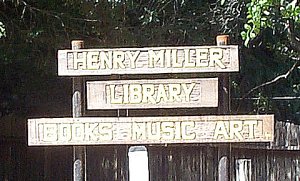
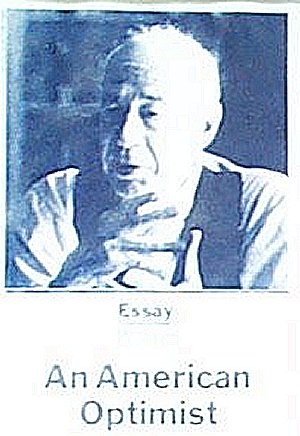
I have been here before; I am retracing my steps from my last visit to Big Sur in 1967 at age 18.
My first attempt at higher education was at San Francisco State College in the fall of 1966. I was immediately drawn to a group of non-credit courses called the Experimental College. A cursory glance around the Student Lounge, where the teachers were taking sign-ups, set my eyes upon a knock-out hippie dude who was offering a course in something called Gestalt Therapy. I signed up. It turned out the teacher's claim to fame was an intimate connection to Paul Goodman, who he actually produced to speak for us, as well as Bernard Gunther and the father of Gestalt Therapy, Fritz Perls. Fritz liked to push people hard, and, in retrospect, I wonder how he expected to enhance the self-esteem of his patients with sarcasm. What the course did was make me aware of Esalen Institute.
A year later, after a good weekend selling my handcrafts at the San Rafael Renaissance Pleasure Faire, I took the profits and bought a beautiful new purple down sleeping bag. I then stuck out my thumb and headed for Big Sur. In those days you could just arrive at Esalen, take a bath in the hot springs, and camp on the lawn. When I emerged from the baths, my beautiful new sleeping bag was gone! I stood stunned and forlorn, when along came an elderly gent in a Bentley, who offered to put me up for night at his home. That was Emil White--Henry Miller's right hand man.
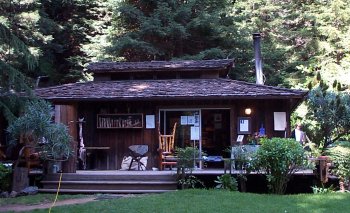
The home Emil White built which is now the Henry Miller Library
Emil was living in a trailer while building a home just down the highway from the famous restaurant Nepenthe, a house which today holds the Henry Miller Library. Emil has long since passed on, leaving behind a cache of wonderful oil paintings, including one of Henry Miller that hangs prominantly in the Library.
Emil plied me with wine and pot, but when he made his actual intentions clear, and I said "No way, let me outta here," he was gallant enough to provide me with my own cot outside the trailer. The next day I hitched back to Sausalito, and, eventually, I bought myself the purple down bag I am using on this tour.
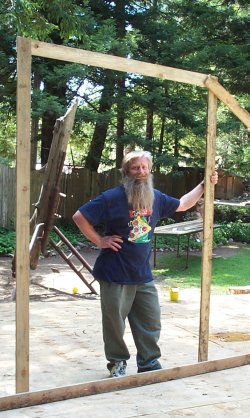
My return was sweet. I was first greeted by David, who was constructing a stage for an art auction to occur the following day to benefit an artist member of the community. David informed me that he had an original version of my book to sign, that his daughter had used the dress patterns in it already, and he intended to gift her with the revised edition. The stage was backed by a wonderful mural on a roll of canvas painted with a map of the Big Sur coastline. Here is a portion of it:
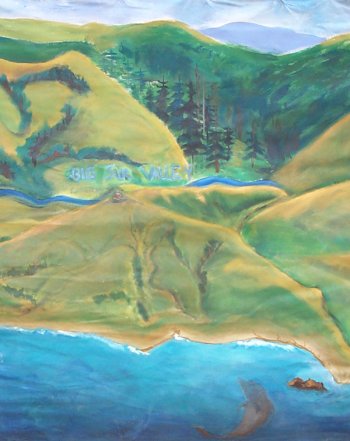
In the center, below the words "Big Sur Valley", is a meditator on a mountain top, and, in the ocean, a whale.
The garden of the Henry Miller Library is an outdoor art gallery; all with a sensuality in keeping with Henry's literary reputation.
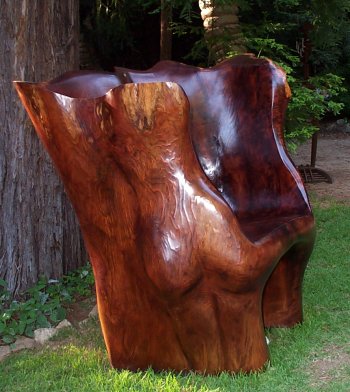
The female side of a throne carved of redwood...
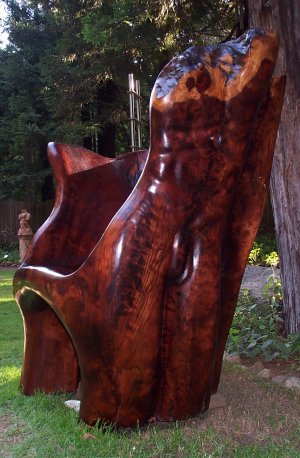
...and the male half on the other side.
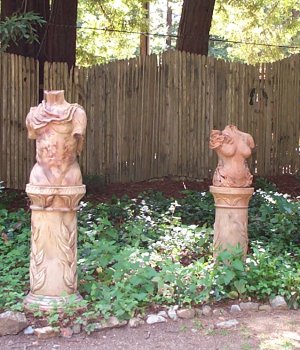
Some classical statuary...

...and some modern.
The inside brims with books and memorabilia of Henry Miller, his friends, and people of like mind, including me. I was particularly struck by an article on one wall explaining that Henry was first introduced to the Big Sur area in 1944 by artist Jean Varda, who, in 1967, when I lived on the houseboats in Sausalito, was one of my mentors. My mother taught me perspective, rendering, anatomy in drawing. Varda's influence brought out my playfulness, spontaneity, surrealism. Varda, a Greek celebrant of life and color, was, at seventy, the object of adoration of countless women, including me, at age eighteen. He taught joy by example. He created not only wonderful collages, but a lifestyle that included a home on a beached ferry boat, the other half of which was occupied by Alan Watts. Watt's half had an austere Zen look--dark wood, stone, bamboo. Varda's half was all bright, faded and chipped colors of paint, colored glass bottles, colorful flags, and roomful of theatrical costumes for his dinner guests to wear at his massive dining table--and he entertained often. He had the only sailboat in San Francisco Bay without numbers painted on it. Why would one need numbers to identify a boat painted pink, orange, and green, with eyes on the prow? I sailed in it with him and two others around the Bay for three days. I was also the last of his friends to see Varda alive in the United States. In September, 1970, on the day Living On The Earth was published in Berkeley, I hitched over to Sausalito with the first copy and presented it to him. The next morning he flew to Mexico, where he was murdered by a street thief. I dedicated my next publication, a colorful 1972 calendar called Earth Time, to his memory.
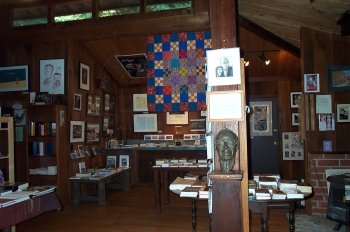
Inside the library and bookstore

Magnus Toren, the Library's director, with Emil White's portrait of Henry Miller below the window
I had been communicating for some months by e-mail with Magnus Toren, curator and director of the Henry Miller Library. Magnus makes the grounds available for a plethora of events--jazz festivals, writing seminars, tomorrow's art auction, next weekend's avant-garde music festival, even some weddings. He is a busy man. Nonetheless, he got the word out, and a small but enthusiastic crowd assembled for my stories and songs inside the library. I am starting to develop a stand-up comedy style. I didn't know I had it in me.

That's Alan and Lani Harriman, my dear friends who came down from Silicon Valley to celebrate my birthday in Big Sur, on the left, and, behind them, Rudy and Danna, a physician and realtor who live in Plano, Texas but pilgrimage "at least once per year" to Big Sur. Shelley, David's wife, holds her original copy of the book, Magnus Toren towers behind her and David stands to her right. Seated are Peggy, a rolfer who works at Esalen, and Joyce, a teacher who also brought her original copy to be signed.